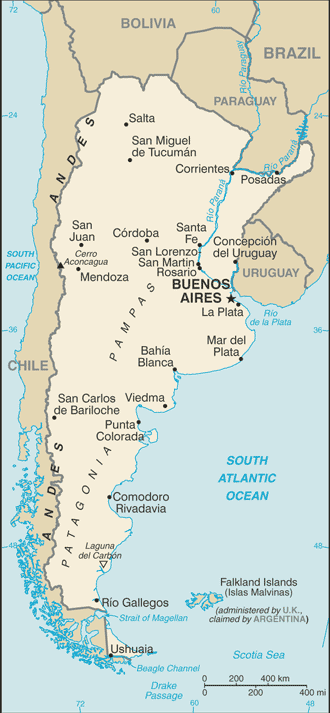Argentina Background Information
 In 1816, the United Provinces of the Rio Plata declared their independence from Spain. Eventually, Bolivia, Paraguay, and Uruguay went their own way, but the area that remained became Argentina. The country's population and culture were subsequently heavily shaped by immigrants from throughout Europe, but most particularly Italy and Spain, which provided the largest percentage of newcomers from 1860 to 1930. Up until about the mid-20th century, much of Argentina's history was dominated by periods of internal political conflict between Federalists and Unitarians and between civilian and military factions. After World War II, an era of Peronist authoritarian rule and interference in subsequent governments was followed by a military junta that took power in 1976. Democracy returned in 1983, and has persisted despite numerous challenges, the most formidable of which was a severe economic crisis in 2001-02 that led to violent public protests and the resignation of several interim presidents. The economy has recovered strongly since bottoming out in 2002. The government renegotiated its public debt in 2005 and paid off its remaining obligations to the IMF in early 2006.
In 1816, the United Provinces of the Rio Plata declared their independence from Spain. Eventually, Bolivia, Paraguay, and Uruguay went their own way, but the area that remained became Argentina. The country's population and culture were subsequently heavily shaped by immigrants from throughout Europe, but most particularly Italy and Spain, which provided the largest percentage of newcomers from 1860 to 1930. Up until about the mid-20th century, much of Argentina's history was dominated by periods of internal political conflict between Federalists and Unitarians and between civilian and military factions. After World War II, an era of Peronist authoritarian rule and interference in subsequent governments was followed by a military junta that took power in 1976. Democracy returned in 1983, and has persisted despite numerous challenges, the most formidable of which was a severe economic crisis in 2001-02 that led to violent public protests and the resignation of several interim presidents. The economy has recovered strongly since bottoming out in 2002. The government renegotiated its public debt in 2005 and paid off its remaining obligations to the IMF in early 2006.